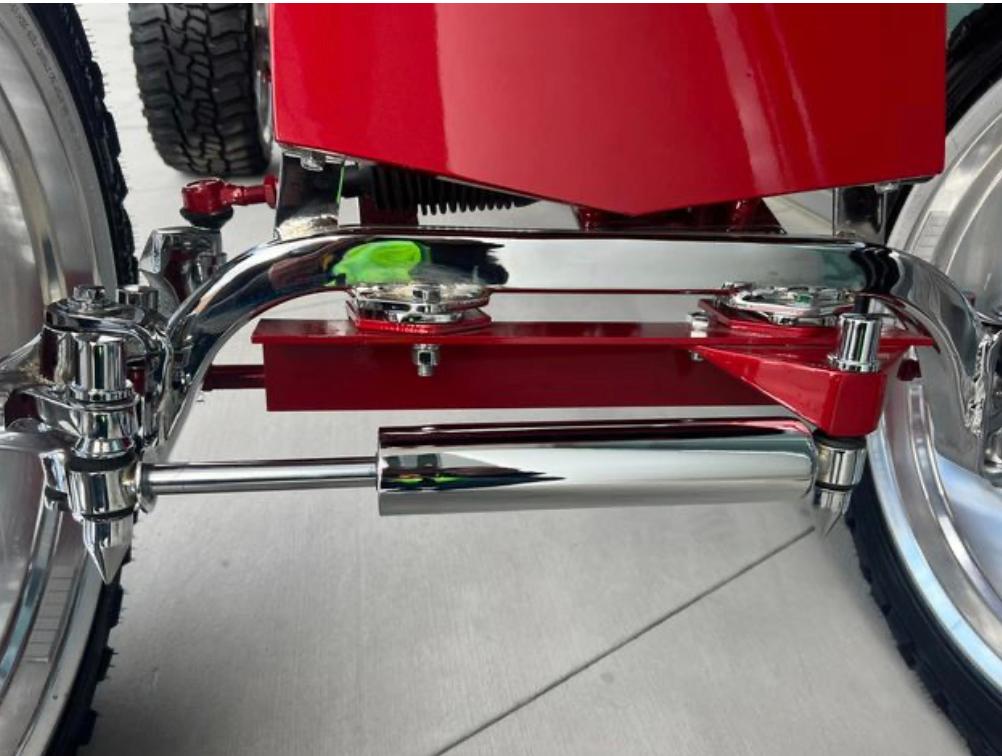How To Tell If Steering Stabilizer Is Bad

The steering stabilizer, often the unsung hero of your vehicle's handling, plays a crucial role in maintaining control, especially on uneven surfaces. While advancements in automotive technology are rapidly changing how we drive, the fundamental importance of a well-functioning steering system remains constant. But how do you know when your steering stabilizer is nearing the end of its life, and what does the future hold for this critical component?
Recognizing the Signs of a Failing Steering Stabilizer
Traditional symptoms of a failing steering stabilizer are often quite noticeable. Keep an eye out for these telltale signs:
- Excessive Vibration: This is perhaps the most common indicator. You might feel a pronounced wobble or shake in the steering wheel, particularly when driving at higher speeds or on rough roads. The vibration might even transmit through the vehicle's chassis.
- Steering Wander: A bad stabilizer can lead to your vehicle drifting from side to side, requiring constant corrections to stay in your lane. This "wandering" effect is exacerbated by wind and uneven road surfaces.
- Difficulty Maintaining a Straight Line: Similar to wandering, you might find it challenging to keep the vehicle tracking straight, especially when encountering potholes or bumps.
- Fluid Leaks: While not always present, visible fluid leaks around the stabilizer body are a clear sign of damage. Hydraulic stabilizers rely on fluid to dampen vibrations, and a leak indicates a compromised system.
- Unusual Noises: Clunking or rattling sounds from the front end, especially when turning or going over bumps, can point to a worn or damaged stabilizer.
However, in the age of electric vehicles (EVs) and advanced driver-assistance systems (ADAS), detecting these issues can be more nuanced. Modern vehicles often mask these symptoms with electronic stability control and power steering, making it harder to feel the subtle degradation of the stabilizer. Therefore, regular inspections are more crucial than ever.
The Future of Steering Stabilization: A Technological Leap
The automotive industry is undergoing a massive transformation, and steering stabilizers are evolving alongside it. Here's a glimpse of what the future might hold:
- Smart Stabilizers with Adaptive Damping: Imagine stabilizers that automatically adjust their damping force based on road conditions, speed, and driving style. Integrated sensors and algorithms could analyze real-time data and optimize the stabilizer's performance for maximum comfort and control. This would be particularly beneficial in EVs, where minimizing rolling resistance and maximizing efficiency is paramount.
- Integration with ADAS: Future steering stabilizers will likely be seamlessly integrated with ADAS features like lane keep assist and adaptive cruise control. This integration will enhance the overall stability and safety of the vehicle, especially in autonomous driving scenarios.
- Electromagnetic Stabilizers: Instead of relying on hydraulic fluid, electromagnetic stabilizers could offer faster response times, greater precision, and improved reliability. These systems could also be lighter and more compact, contributing to improved fuel efficiency (or battery range in EVs).
- Advanced Materials: The use of lightweight and durable materials like carbon fiber and advanced alloys will further enhance the performance and longevity of steering stabilizers. These materials can withstand extreme conditions and reduce unsprung weight, improving handling and ride quality.
Challenges and Considerations
While these advancements are promising, several challenges need to be addressed. The complexity of these systems will require specialized diagnostic tools and trained technicians. Furthermore, the cost of advanced stabilizers could be a barrier to adoption, especially in entry-level vehicles. Standardization and interoperability will also be crucial to ensure that these systems can be easily integrated across different vehicle platforms.
In the context of EVs and hybrid systems, the added weight of batteries can put extra strain on the steering system. Therefore, robust and reliable steering stabilizers are even more critical in these vehicles. Manufacturers are already focusing on optimizing the weight distribution and suspension systems of EVs to mitigate these challenges.
Mobility Reimagined: A Steering System for the Future
Mobility is no longer just about getting from point A to point B; it's about the experience. As we move towards a future dominated by autonomous vehicles and shared mobility services, the role of the steering system will continue to evolve. Imagine a future where vehicles can seamlessly adapt to any terrain, providing a smooth and comfortable ride even on the most challenging roads. Steering stabilizers will be an integral part of this transformation, contributing to a safer, more efficient, and more enjoyable driving experience.
The future steering stabilizer isn't just a component; it's a proactive, intelligent system that anticipates and responds to the needs of the driver and the environment. It's a key element in creating a truly seamless and personalized mobility experience. This is the vision that drives innovation in steering technology and it promises a future of unparalleled control and driving pleasure.
